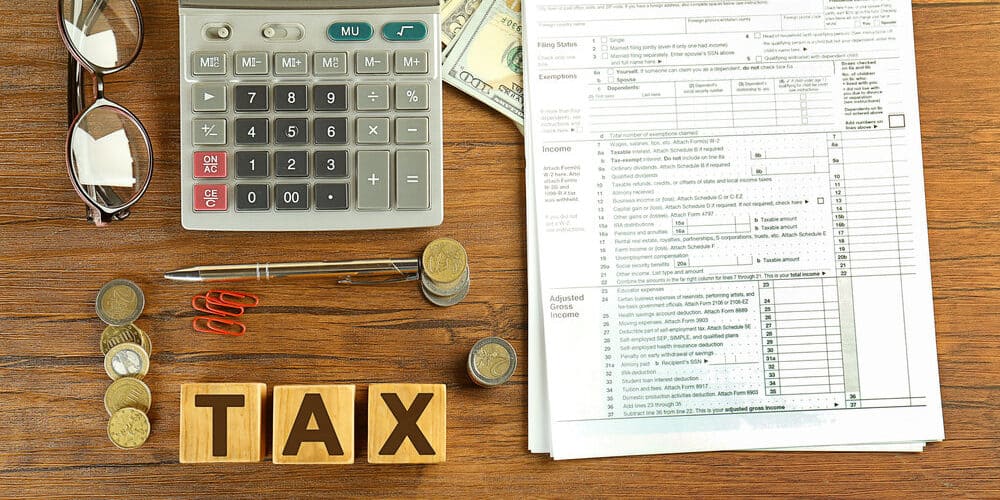
BY
|
The 7 Types of Trusts in Australia You Need to Know
The different types of trusts in Australia are widely used as a preferred business structure when it comes to investments, managing the financiboxaal affairs for families, as well as business purposes.
Are trusts only for the wealthy? In fact, trusts are accessible to everyday families and business owners, not just the wealthy. They are versatile tools for managing assets, protecting loved ones, and tax planning, even for modest estates.
One crucial aspect to consider when setting up a trust is the role of a corporate trustee. Appointing a corporate trustee can enhance asset protection, limit liability, and provide better control over distributions, making it an important element in the overall structure and administration of the trust.
A trust is a legal arrangement where a trustee holds assets for beneficiaries, rather than a separate legal entity like a company. This means a trust is a relationship with fiduciary duties, not a distinct legal person.
But did you know that there are a handful of different types of trusts in Australia?
If you’re looking to open a trust, it’s essential to know the various types of trusts available so that you can decide which one is best suited for your individual situation.
In this article, we’ve put together a list of the seven most common types of trusts in Australia so that you have some guidance on how to move forward with opening a trust for your investment, a business or even your family.
What Is a Trust?
A trust is a legal relationship established when a settlor transfers assets to a trustee, who holds and manages these assets for the benefit of the beneficiaries. The trustee is responsible for managing assets held in the trust, ensuring they are administered according to the trust deed.
The primary purpose of a trust is to manage and distribute assets in a tax-efficient manner, protect assets from creditors and lawsuits, and provide for beneficiaries with special needs. Trusts play a crucial role in protecting assets from risks and liabilities.
Trusts can also be instrumental when it comes to how you manage tax liabilities, maintain control over assets during one’s lifetime, and ensure the continuity of a business or family legacy. The trustee has a fiduciary duty to act in the best interests of the beneficiaries when managing the trust. By setting up a trust, individuals can safeguard their wealth and ensure it is used according to their wishes.
Types of Trusts Terms You Need to Know
Before delving into the different types of trusts, there are several critical terms that you need to be aware of. A trust structure is a legal and financial framework for managing assets, where a trustee holds and manages property for the benefit of beneficiaries. Trusts are often used for tax reasons and to manage business assets, making them valuable tools in estate planning and wealth protection.
The Settlor
The settlor is the individual who established the trust. To establish the trust, the settlor must appoint a trustee and name the beneficiaries.
Once the trust is established, the settlor will no longer fulfil any role in the trust.
For tax purposes, the settlor should not be a trust beneficiary.
The Trust Deed
Think of the trust deed is a legal agreement that contains the “terms and conditions” of the trust. It stipulates the role of the trust as well as how the trust should operate.
The Trustee
The trustee of the trust is the individual or corporate entity who is responsible for:
- holding the trust’s assets on behalf of the beneficiaries, and
- ensuring that the trust is managed per the trust deed
Appointing a corporate trustee can enhance asset protection, limit liability, and provide better control over distributions.
Hybrid trusts combine features of fixed and discretionary trusts. In these trusts, beneficiaries enjoy a fixed interest in assets, while the trustee decides how to allocate income and capital, incorporating characteristics of both fixed and discretionary trusts. In some cases, the trustee’s discretion allows for flexible distribution of certain benefits to beneficiaries.
Along with managing the trust’s assets in accordance with the trust deed, the trustee is responsible for distributing income and capital gains of the trust to the beneficiaries according to the trust deed.
According to trust law, trustees are personally liable for the debts of the trust they administer.
The Beneficiary
These are the entities or individuals that benefit from the trust.
Beneficiaries have no control over the trust and simply receive their benefit in accordance with the trust deed, which helps protect assets and control the distribution of wealth to beneficiaries. Depending on the trust structure, beneficiaries may receive income or capital from the trust. In family trusts, distributions are typically limited to members of the same family group for tax purposes.
Note: The trust doesn’t pay any income tax, as all the profits are distributed to the beneficiary. As a result, the beneficiary pays the tax on the income distributed to them. If a beneficiary has a present entitlement to trust income, they are taxed on that income.
What is a Living Trust in Australia?
In Australia, a living trust, also known as an inter vivos trust, refers to a trust established during the settlor’s lifetime, as opposed to a testamentary trust, which is created through a will and takes effect after the settlor’s death. Living trusts can serve various purposes, such as asset protection, tax planning, and managing the distribution of wealth to beneficiaries.
The 7 Types of Trusts in Australia
1. Discretionary Trusts (a.ka. Family Trusts)
A discretionary trust, also known as a family trust, is a type of trust where the beneficiaries have no defined entitlement to the income or assets. The trustee has complete discretion to distribute the trust income to beneficiaries, making it a popular choice for family businesses and asset protection.
Discretionary trusts are often used for tax planning and can provide asset protection benefits. This flexibility allows the trustee to allocate income in a way that minimises the overall tax burden and protects the trust assets from potential creditors.
2. Fixed Trusts
As the name suggests, fixed trusts require the trustee to hold the trust assets for the benefit of the beneficiaries in specific fixed percentages. In a fixed trust, each beneficiary has a fixed entitlement to the trust’s income or capital, as set out in the trust deed.
So, the trustee doesn’t have to exercise discretion in dividing the trust property. Instead, each beneficiary is entitled to a fixed share of the trust capital or income, and this fixed entitlement cannot be changed by the trustee.
One type of fixed trust is a unit trust.
What Is a Fixed or Unit Trust?
A unit trust works similarly to shareholders holding shares in a company. Each beneficiary holds a certain number of ‘units’ within the trust and is entitled to the trust income and capital based on the proportion of units they hold.
In other words, the trust property in the unit trust is held absolutely for the benefit of the unitholder. The unitholder is the beneficiary of the trust.
So, the trustee does not have the discretion to distribute the trust income or capital among unitholders. Instead, distributions are allocated according to the units.
Unit trusts are commonly used for joint ventures, managed funds, and holding investment property, as well as for general investment purposes or joint business ventures.
Example:
Lara, Josh and Morgan are unitholders of a unit trust. They each benefit from the trust according to the number of units they own.
Lara holds 120 units, Josh holds 60 units, and Morgan holds 20 units.
Each member benefits from a percentage of the trust assets based on these units:
- Lara benefits from 60% of the assets;
- Josh benefits from 30% of the assets; and
- Morgan benefits from 10% of the assets
3. Hybrid Trusts
Simply put, a hybrid trust is a trust that has characteristics of both a fixed trust and a discretionary trust.
Hybrid trusts are quite appealing to many people because their beneficiaries have the best of both worlds.
Example:
The Burns family and The Sheeren family have been family friends for decades. Because they share a mutual understanding and trust one another, they’ve decided to purchase a commercial property together.
Due to the asset protection and income tax benefits attached to purchasing the commercial property through the hybrid trust, they’ve chosen this as their preferred method of structuring their investment activity.
Some benefits (most commonly the trust income) are fixed in their favour, while other benefits (generally the trust capital) will be allocated to them in accordance with the trustee’s discretion.
4. Testamentary Trusts
This kind of trust takes effect upon the death of a testator.
Essentially, a testamentary trust is established per the deceased’s will, so it only comes into existence upon their passing.
So, instead of having the deceased’s assets specifically allocated to certain beneficiaries, the estate is held in trust on behalf of the beneficiaries to protect assets and control the distribution of wealth.
Usually, there will be rules and conditions on how the deceased wants the funds of the trust to be distributed among the beneficiaries.
Example:
Eva passes away and leaves the following clause in her will: “The remaining assets in my estate must form the body of a trust for my son and daughter’s future education, which will terminate when the youngest child (my daughter) turns 25. Any profit accumulated in the trust must then be divided among my son and daughter for their future health.”
5. Special Disability Trusts
Special disability trusts are established to help immediate relatives and guardians provide for the future of family members who have a disability.
A special disability trust can be established either through a will or by a living relative to benefit their disabled family member.
The relative or guardian can contribute trust assets up to $500,000 without reducing the beneficiary’s social security entitlements or their income support payments.
The family member who will benefit from the trust must have a severe disability or medical condition to qualify as a beneficiary.
6. Charitable Trusts
Among the different types of trusts in Australia, charitable trusts are established for philanthropic purposes, providing funds or assets to charitable causes and organisations.
These trusts offer tax advantages for donations made to eligible charities and not-for-profit entities.
The key features of charitable trusts include:
- They are set up with the specific purpose of benefiting a charity or charitable cause outlined in the trust deed.
- The beneficiary is the charitable organisation or cause, rather than individuals or a family.
- Donations and income earned by the trust can receive tax concessions and deductions if the charity meets certain criteria set by the Australian Taxation Office.
- Trustees are responsible for ensuring funds are properly managed and used for the stated charitable purposes.
- Charitable trusts can be established during the settlor’s lifetime or through a will (testamentary charitable trust).
- Charitable trusts provide a vehicle for individuals or businesses to donate funds, property or other assets in a tax-effective manner while supporting causes important to them. However, they involve legal and regulatory requirements around their establishment, management and reporting to qualify for tax benefits.
7. Superannuation Trusts
All superannuation funds in Australia, whether a self-managed superannuation fund or an industry fund, are legally structured as trusts known as superannuation trusts or super funds. These trusts are established to manage retirement savings and provide income streams for members during retirement.
The key features of superannuation trusts include:
- They must comply with the Superannuation Industry (Supervision) Act and regulations set by the Australian Taxation Office and the Australian Prudential Regulation Authority.
- The trust deed outlines the rules for operating the fund, including member contributions, investment strategy, and benefit payment.
- Trustees (individual or corporate) are responsible for managing the fund assets and ensuring compliance with regulations.
- Members are the beneficiaries who contribute funds and receive benefits like pensions or lump sum payments upon retirement.
- Superannuation trusts receive concessional tax treatment on contributions and earnings to incentivise retirement savings.
- Self-managed super funds (SMSFs) allow up to 4 members to be trustees and have direct control over the fund’s investments, giving them discretion over how the fund’s investments are managed.
- While providing tax advantages, superannuation trusts involve strict rules around the establishment, administration, investment restrictions, reporting requirements and payment of benefits to qualify for tax concessions. Trustees must exercise care in managing these trusts compliantly.
- Superannuation trusts provide employers a means to contribute to employees’ retirement funds in a concessionally taxed environment. For individuals, trusts like SMSFs offer greater control and investment flexibility for retirement planning.
What is a Living Trust in Australia?
In Australia, a living trust refers to a trust established during the settlor’s lifetime, as opposed to a testamentary trust, which is created through a will and takes effect after the settlor’s death. Living trusts can serve various purposes, such as asset protection, tax planning, and managing the distribution of wealth to beneficiaries.
Types of Trusts in Australia at a Glance:
| Trust Type | Description | Common Uses |
| Discretionary Trusts | Trustee has full discretion over distribution of income/capital to beneficiaries each year. Example: Family Trusts | Asset protection, tax planning, managing family assets/businesses |
| Fixed Trusts (Unit Trusts) | Beneficiaries have fixed entitlements based on unit holdings, similar to company shares. Trustee cannot exercise discretion. | Investment purposes, joint business ventures |
| Hybrid Trusts | Combines fixed interests for beneficiaries and discretionary powers for trustee over certain assets | Allows flexibility for different asset classes |
| Testamentary Trusts | Created through a will, comes into effect after settlor’s death to distribute estate assets | Protects assets, controls distribution of wealth to beneficiaries (e.g. children) |
| Special Disability Trusts | Allows relatives to contribute up to $500,000 in assets for benefit of family member with severe disability | Provides for disabled beneficiary without reducing social security entitlements |
| Charitable Trusts | Established for philanthropic purposes of providing funds/assets to charitable causes and organisations | Offers tax advantages for eligible donations to charities/non-profits |
| Superannuation Trusts | All superannuation funds are legally structured as trusts to manage retirement savings and provide income streams | Must comply with regulations, offers tax concessions on contributions/earnings |
| Bare Trusts | The simplest trust structure, where a trustee holds assets for one legally competent beneficiary who has full control and entitlement. If the beneficiary is a minor, control passes to them when they reach legal age. Commonly used for nominee shareholding or holding assets for minors. | Nominee shareholding, holding property for minors until they reach legal age |
Key Takeaways
A trust is a structure that allows a person or other legal entity, such as a company, to hold assets to benefit others, known as the trust beneficiaries.
A trustee legally controls any assets that are put into a trust in terms of the trust deed.
Depending on the purpose of your trust and the tax benefits you would like to obtain, there are various types of trusts you can choose from.
If you’re a business owner who is looking to take advantage of trust structures to help minimise tax, you need make sure you are getting proper legal and financial advice. It is highly recommended to consult a financial advisor and seek legal counsel before establishing a trust to ensure it is tailored to your needs and complies with all relevant laws.
There is no “one size fits all” when it comes to trusts.
At Box Advisory Services, our team of experienced trust accountants can help you navigate through the decision of opening a trust.
To find out how we can help you, book in a free consultation with us to assess your situation.
Sign up* to our monthly newsletter where we share exclusive small business and contractor advice!*
Disclaimer:Please note that every effort has been made to ensure that the information provided in this guide is accurate. You should note, however, that the information is intended as a guide only, providing an overview of general information available to contractors and small businesses. This guide is not intended to be an exhaustive source of information and should not be seen to constitute legal or tax advice. You should, where necessary, seek a second professional opinion for any legal or tax issues raised in your business affairs.



